Family Room vs Living Room: Is There Even a Difference?
Author: Rick Worst | Editor: Omar Alonso
Review & Research: Jen Worst & Chris Miller
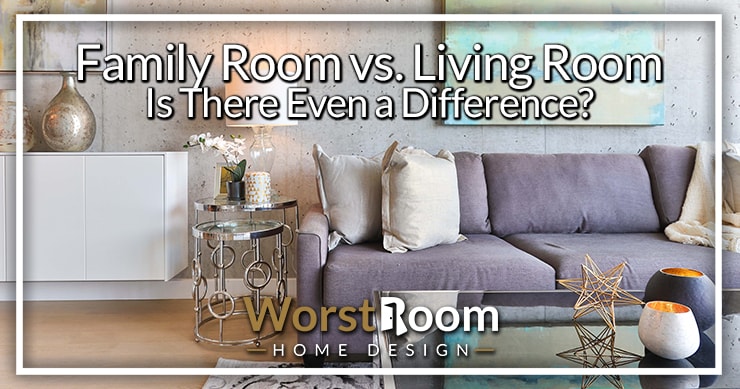
The designation of a “family room” dates back to the 1940’s when the concept of this room was described in a book about building homes. The term “living room”, on the other hand, has a slightly more grim origin story that really sets the tone for understanding the differences in a family room vs living room.
Prior to being dubbed the living room, this part of the home was quite literally a place for dead bodies. The name-swap helped change the reputation of this room and it became a place to socialize, enjoy time with family and friends, and certainly not a place to rest corpses anymore.
I want to share some history about the name of this particular room, when it should be called a living room and when it should be called a family room, and also some other types of rooms that also fall into this similar category.
From Death Room to Living Room
In the early 1900’s, the large room at the front of a home was referred to as a “death room”, where the bodies of the deceased were kept for mourning.
As the spread of fatal influenza decreased, the Ladies' Home Journal proposed that this room become known as the “living room” instead. It was (and still is) the room that is used to gather, for social activities, relaxing, and entertainment.
In some cases, a living room and a family room and the same thing. Other times, these phrases mean specific and different things. Sometimes, a family room is a living room and a living room is a family room, but not all the time.
Does it sound confusing? It’s really not. I’m going to break it down, and I also want to briefly touch on dens, rec rooms, rumpus rooms, and how all of these terms intermingle.
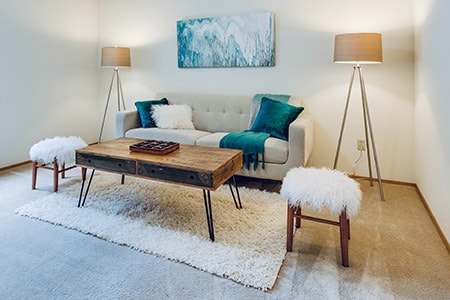
Let’s start by comparing the living room and the family room, and then we’ll continue by defining the different names for similar types of rooms, what makes some of them distinct from the others, and what they share in common.
Living Room vs Family Room: What’s The Same & What’s the Difference?
The easiest way to understand the distinction between living rooms and family rooms is by talking about homes that have both of them.
Some homes will have one or the other, and that’s where the definitions can crossover a lot more and it really comes down to what the homeowner prefers to call it. But in houses with both of these types of rooms, the contrast is a lot more obvious.
In a home that has both a family room and a living room, the family room is usually designed in a less formal way, and it is usually located away from the entrance to the home.
On the other hand, the living room label will apply to the gathering room that’s closer to the main entrance of the house. Since the living room is the first thing guests see when they enter the home, it’s often set up in a more formal way.
In homes with both, you’re more likely to see various types of TVs, videogame controllers, books spread out on the table, comfortable furniture for lounging, and so on within the family room. A television is almost guaranteed in the modern age.
A living room, in these cases, will likely have more highly styled furniture (at the expense of comfort), and won’t have homework spread out on the table, or games lying around, and so on. Some families choose to treat it as a formal dining room instead.
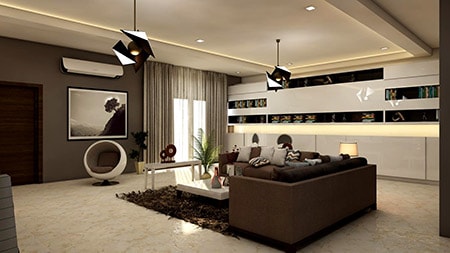
Contrary to their names, the best way to understand it is that the family room will be more for “living” in, relaxing, letting loose, and not worrying about everything being perfectly arranged for making a great first impression.
The living room, on the other hand, puts less of a priority on practical use and more on presenting an ideal version of the home. You’d have a tea party or an afternoon snack in the living room, but you would stretch out with a cozy blanket and a movie in the family room.
Heart of the House: Types of Family Rooms & Living Rooms
The living room acts as the heart of a house. It’s often the largest room in the home, or at least one of the largest. If you have show-piece furniture, antiques, and so on - the living room is the place that people often choose to show that off, whereas the family room is where you’d put function above style.
Of course, there are a lot of moving parts here, and not everybody chooses to setup their home exactly the same way. You’ll find plenty of families and individuals that use their family rooms more like a living room and vice-versa.
The big distinction is the location of the room. If there’s a large room for congregating near the front of the home, and no other similar space, it can be a family room or a living room - but would lean towards living room (especially if there’s a second area in the home that is used more casually.)
This more or less covers living rooms vs family rooms, but we’ve got a long list of other types of rooms that can all muddy the waters, so here’ some clarity on those, too…
Den
A den can be used for hobbies and different types of activities, much like a family room or a living room, but a den is often more secluded and offers more privacy. To further illustrate this, you won’t find a den that is a huge, open room near the front of a house.
A den is closer to being an office at times, but usually more casual. It's often an all-purpose room for casual work and play.
Recreation Room
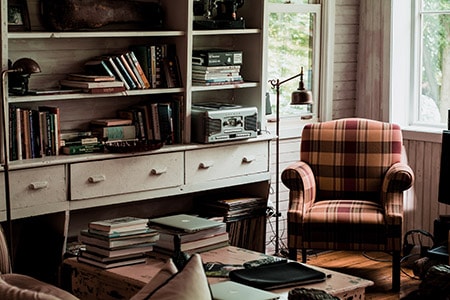
A rec room is quite similar to how a family room might be used in a house that has a living room. A rec room doesn’t have the same implied privacy as a den. It’s similar to a playroom.
For a family with kids, this is one of the rooms where you won’t be surprised to find a chest of toys, a carpet on the floor with streets and buildings printed on it for playing with toy cars, kids writing on the drywall, and so on.
Garret
A garret is essentially an attic that’s been at least somewhat finished to allow for it to be inhabitable. These aren’t as common anymore. They’re awkward to get into, they’re cramped, and they’re not very practical.
When space is limited, this is considered the least prestigious room in a home to stay in. Many modern houses will have a garret in the form of a bonus room above a garage, though, which we'll talk about next.
Bonus Room
This is a room that has been added after the initial construction of a home. If your local building code requires that bedrooms need to have, for example, a window and a closet and electrical outlets, this is a room that doesn’t meet that criteria so it can’t be advertised as an additional bedroom in the home.
It can be used as an office, a game room, and so on. You’ll notice bonus rooms that are clearly intended for somebody to sleep in, but it would be against code to advertise them as such.
If you’re shopping for a home (or a place to rent), this is something to keep in mind - it could have an impact on your home insurance or how many people are allowed on the lease.
Common Room
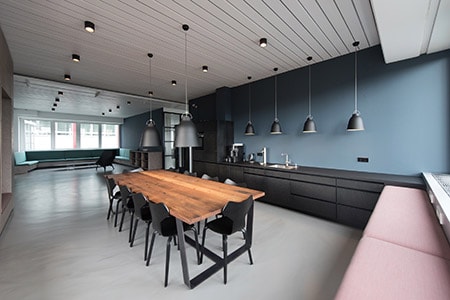
This type of room functions similar to a living room, except it’s found in places of shared accomodations like a dormitory, a group-home, a senior living center, and so on.
There are other types of rooms including shrines, home offices and theaters, billiard rooms, dining rooms, and many more. Most of them are self-explanatory, and many of them could also be referred to by other names.
A study and an office are essentially the same room, for example. A rec room could have a pool table and then it’s essentially a billiard room, and the list goes on. Certain room designations go in and out of style as decades pass, but they're all essentially just sub-types of a living or family room.
Is There Really a Difference Between Living Room and Family Room?
At the end of the day, these are mostly just guidelines. Some of the definitions are stricter than others, but most of these rooms and their usage can also vary by region.
Some terms are more popular for one type of room in some areas, and vice versa in other parts of the world.
The location and level of formality is usually the main difference, but in practise the terms are more or less interchangeable. You might not have the literal dictionary definition spot-on for the exact way you use the room you’re referring to, but everybody will still know what you’re talking about.
So to sum it all up, if you’re trying to decide whether you have a family room vs living room, it’s kind of up to you.



